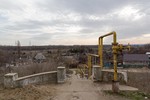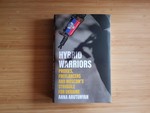Why Kyiv cannot possibly fix the 'root causes' of the conflict
No amount of unilateral Ukrainian concessions would address what Russia considers the ‘root causes’ of the conflict.
Armed conflict of the Dniester, thirty years later
A newly-published book explores the circumstances around the violence that accompanied Transnistria’s de facto secession from Moldova. Three decades later, finding new answers to old conundrums is key to preventing ongoing tensions from escalating
Has Transnistria just entered its last year with Russia’s gas subsidy?
A large share of Transnistria’s economy, including most of its budget, depends on a structural subsidy it receives from Russia in the form of free gas. As Ukraine has promised to stop all Russian pipelines going through its territory by the end of 2024, how will Transnistria cope?
Conflitto tra Armenia e Azerbaijan e guerra in Nagorno Karabakh
Analisi e podcast usciti in italiano riguardanti il conflitto tra Armenia e Azerbaijan e la guerra in Nagorno Karabakh
Ukraine should reconsider its male travel ban
It is a violation of human rights, it is unnecessary, it forces unbearable decisions on families, and creates new vulnerabilities. As it renews its martial and mobilization laws in August, Ukraine should reconsider its male travel ban
How hybrid warriors without a masterplan set the stage for a full scale invasion
What were the proximate dynamics that made possible what took place in the Donbas between 2014 and 2022? And what has even happened? An important part of the answer is convincingly outlined in Anna Arutunyan’s excellent latest book
Invasione dell'Ucraina da parte della Russia
Analisi e interviste uscite in italiano riguardanti l’invasione dell’Ucraina da parte della Russia
The Italian maritime republics and slave trade from the Caucasus
Italian maritime republics such as Venice and Genoa were very active in the Black Sea between the 13th and 15th century. Their presence in Abkhazia and their involvement in the slave trade from the Western Caucasus are the main subjects of a recently published book
EU takes its best action against foreign interference when tackling the big issues
A swirl of new acts and strategies has been announced in the last couple of weeks by the European Commission, including the European Democracy Action Plan, the Digital Markets Act, and the EU’s Cybersecurity Strategy. If we ask the right questions about foreign interference, these are all part of the answer
“Russia” as a source of concern: are we really talking about Russia?
What do we even mean when expressing concern about “Russia”? As it turns out, Russia can be both a symbol and an external actor able to influence domestic processes. It is important to resist the temptation to conflate different preoccupations



